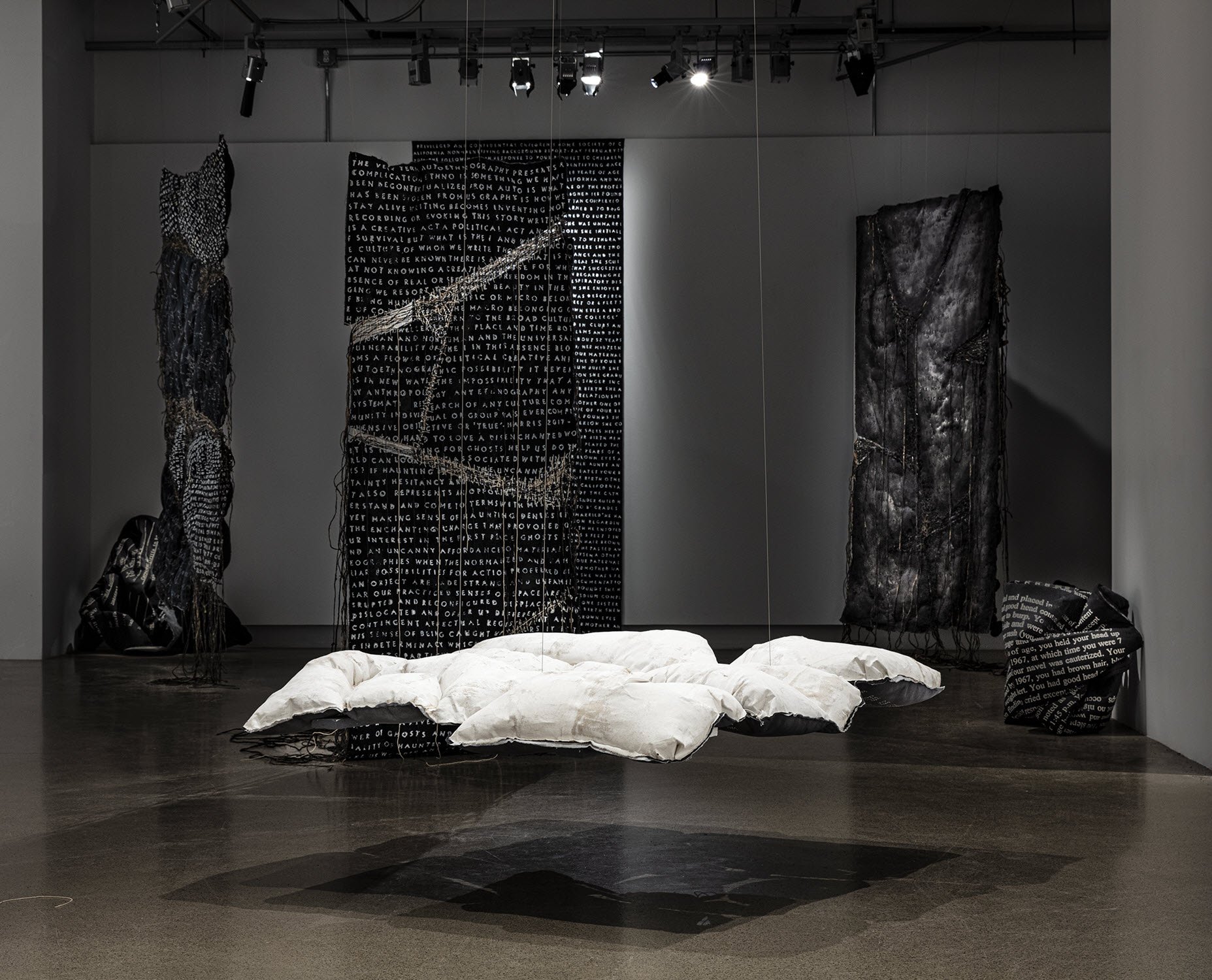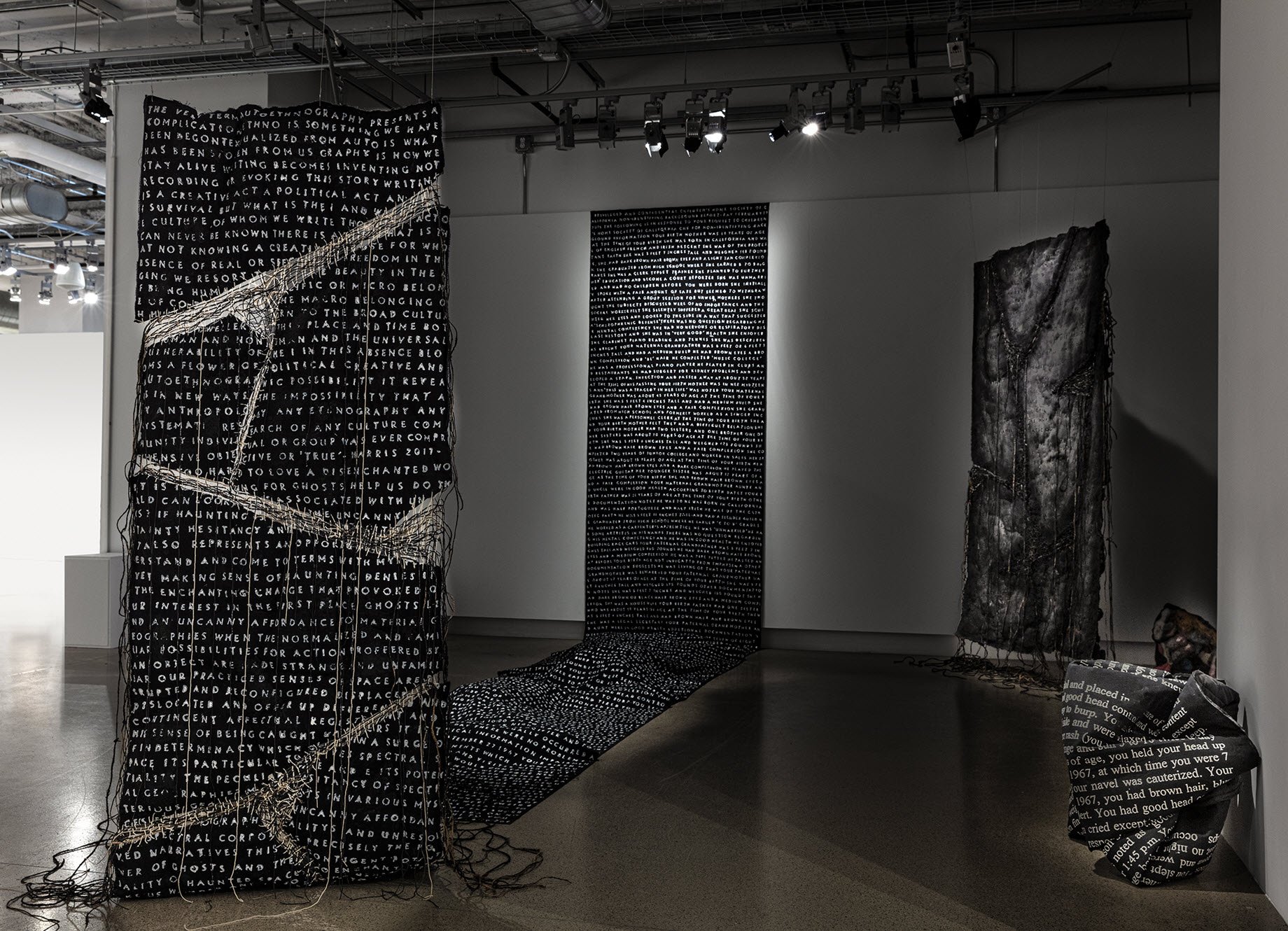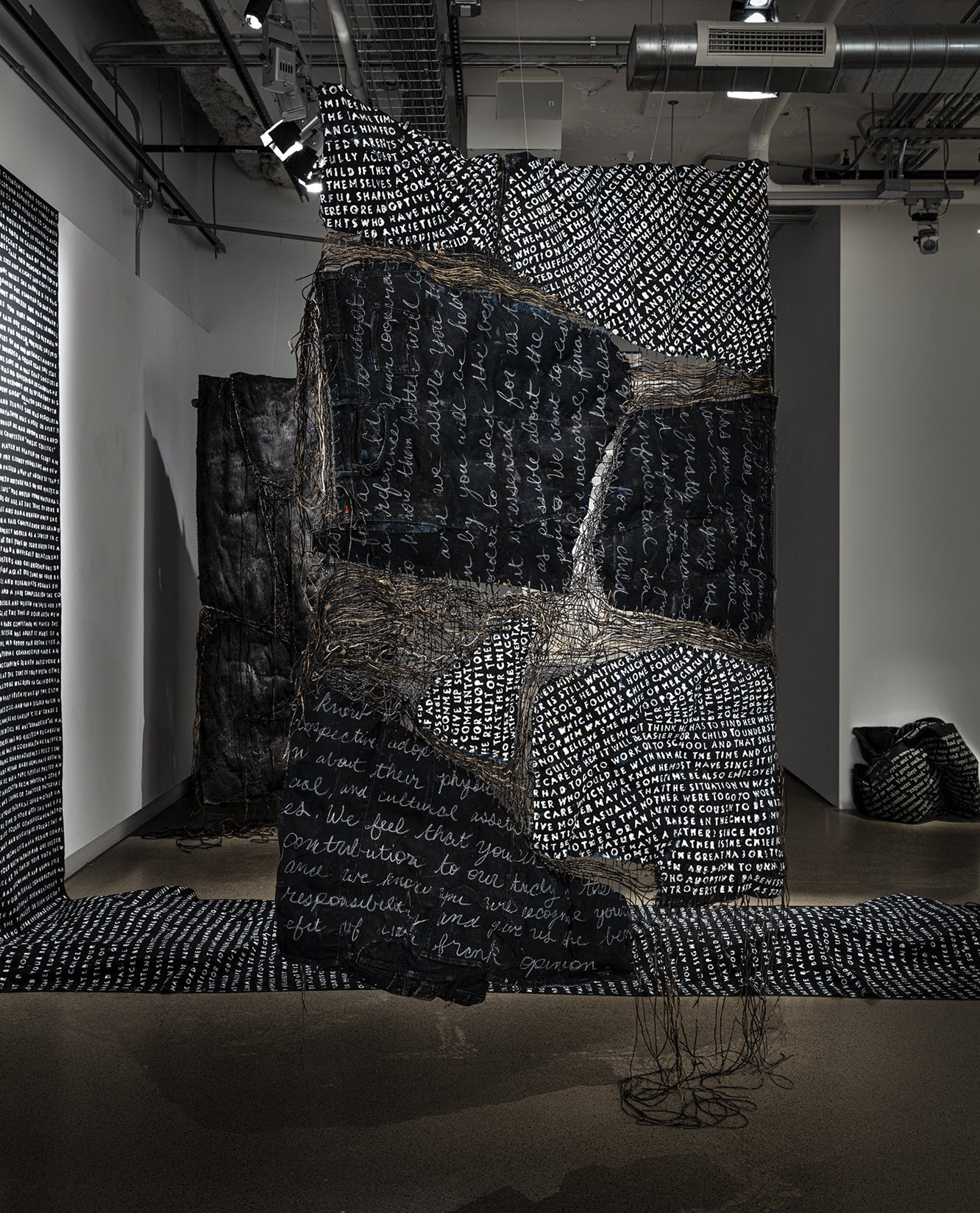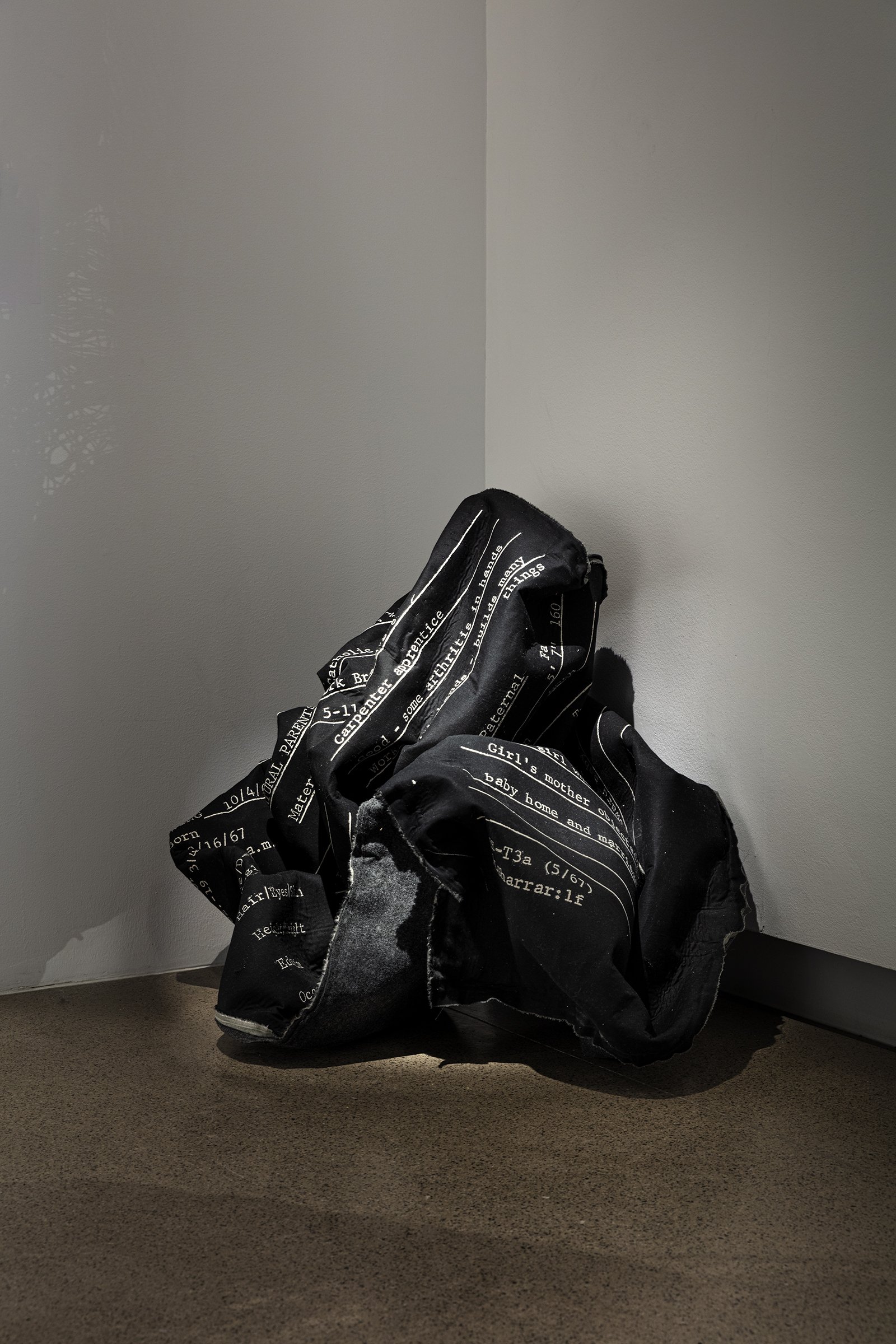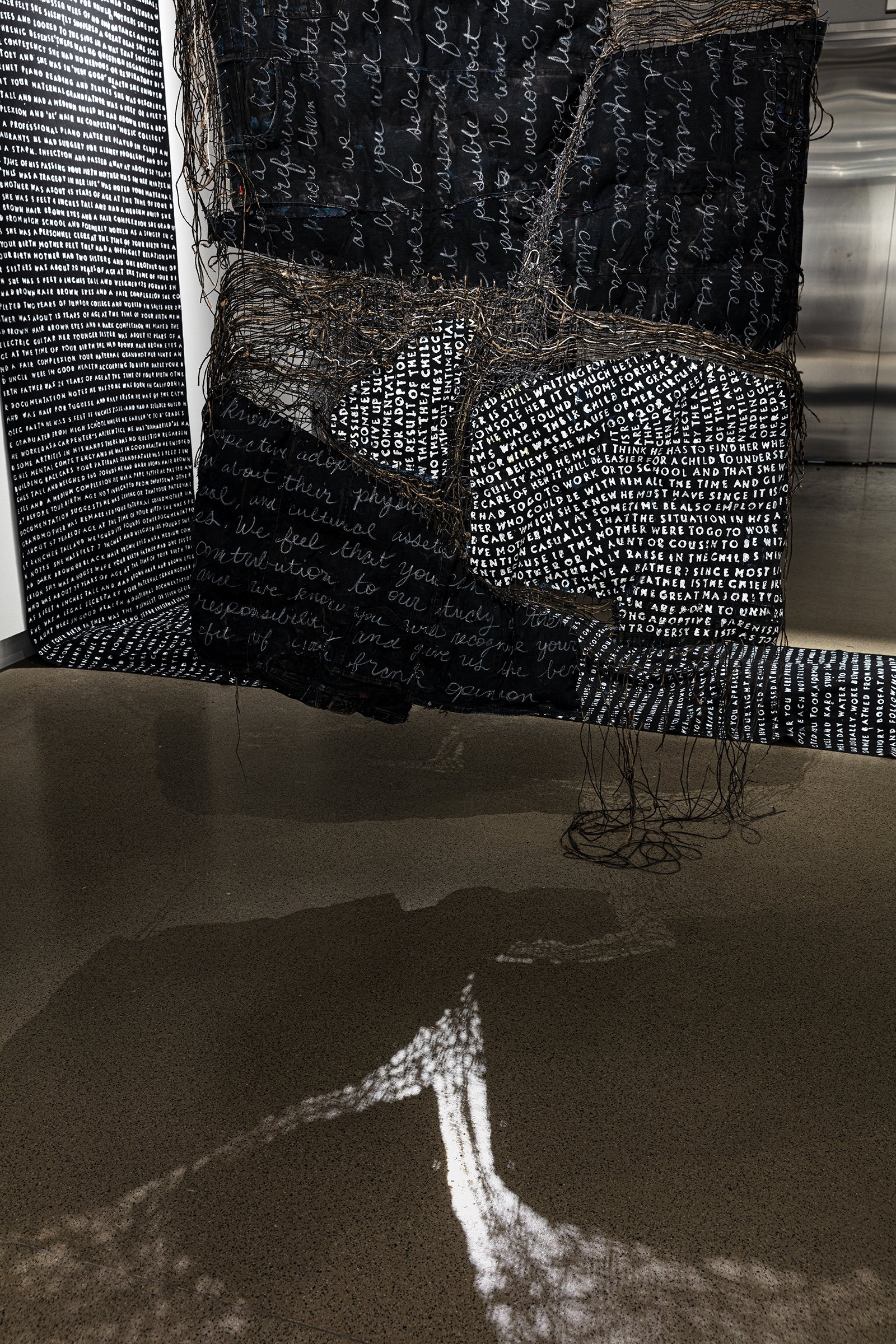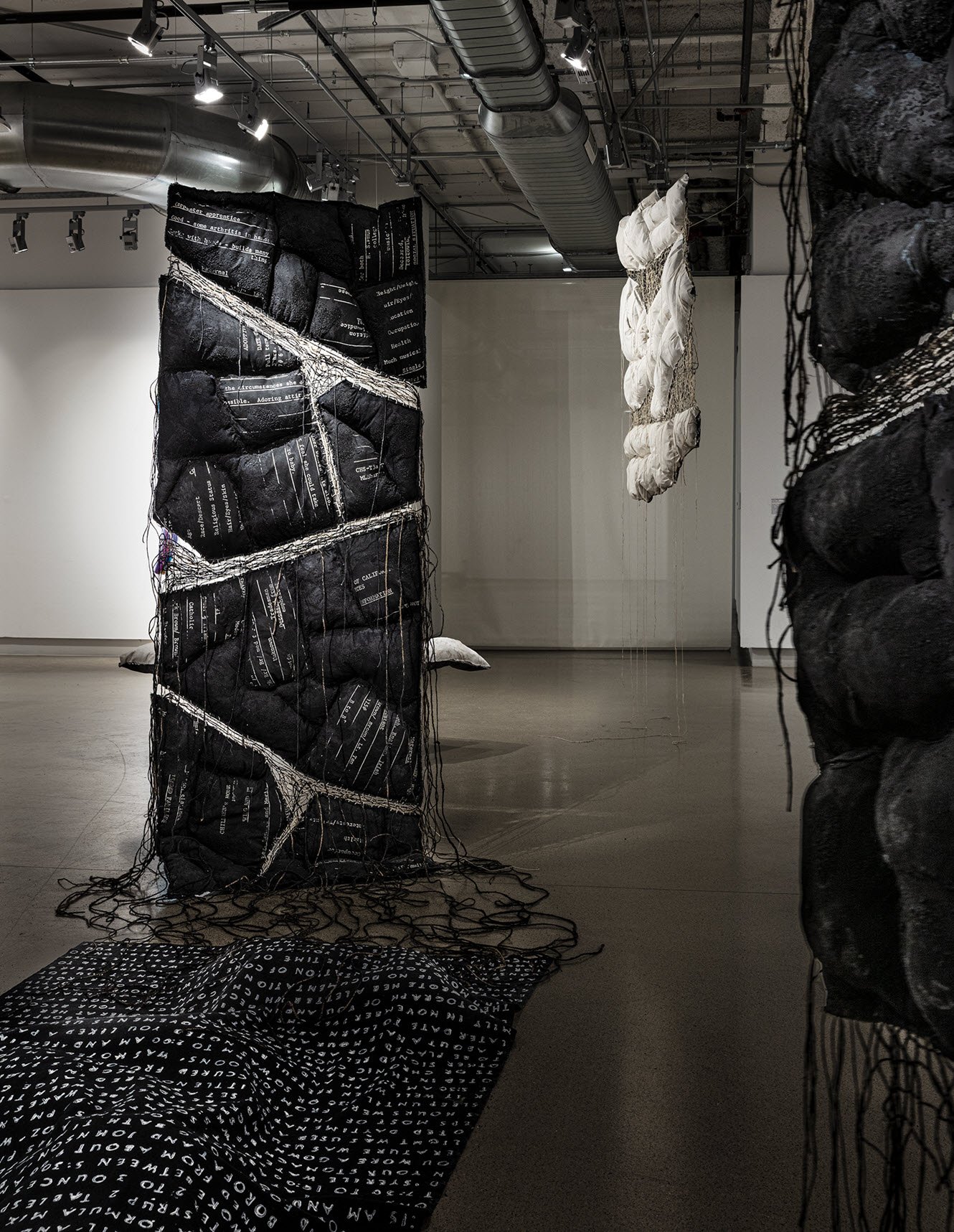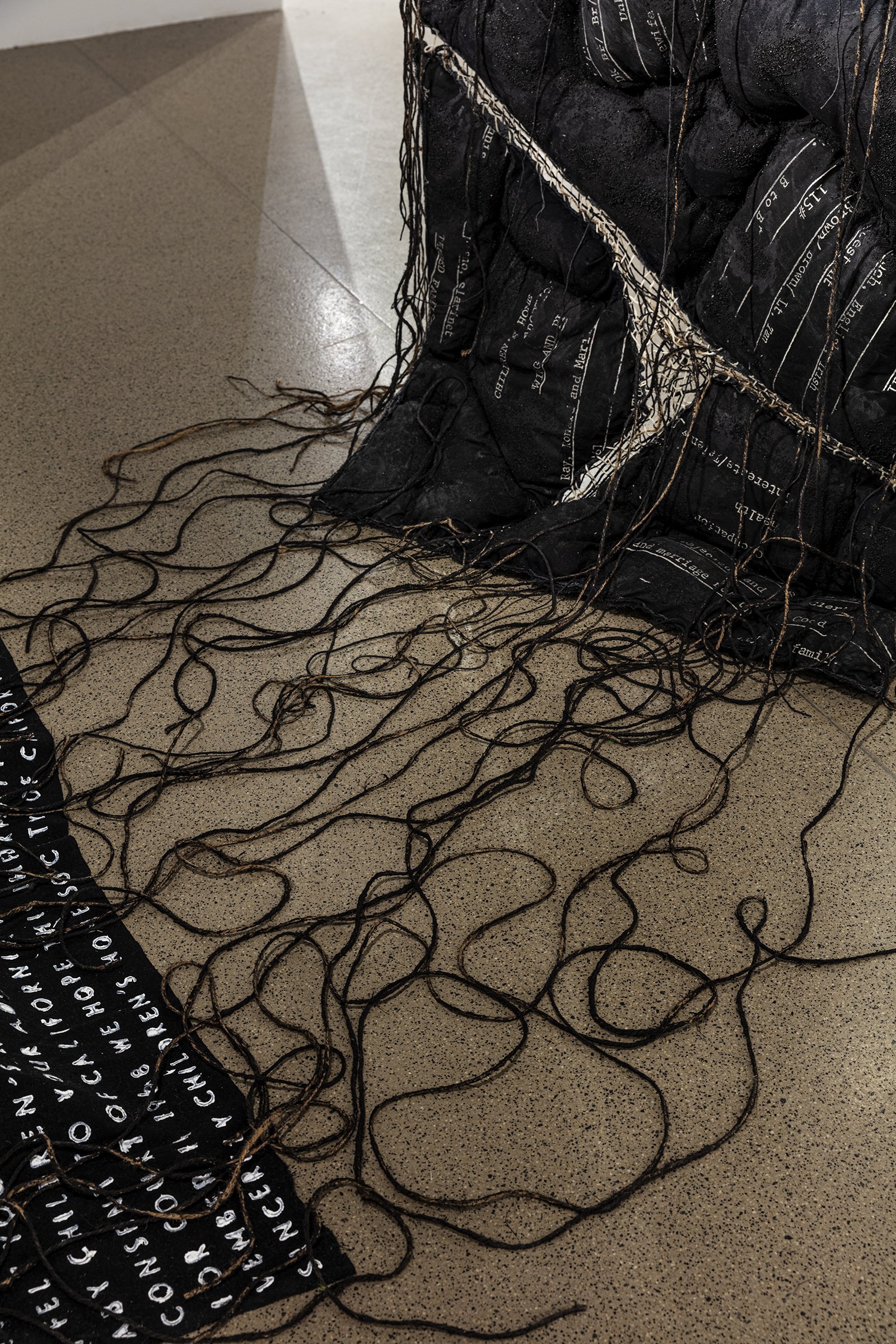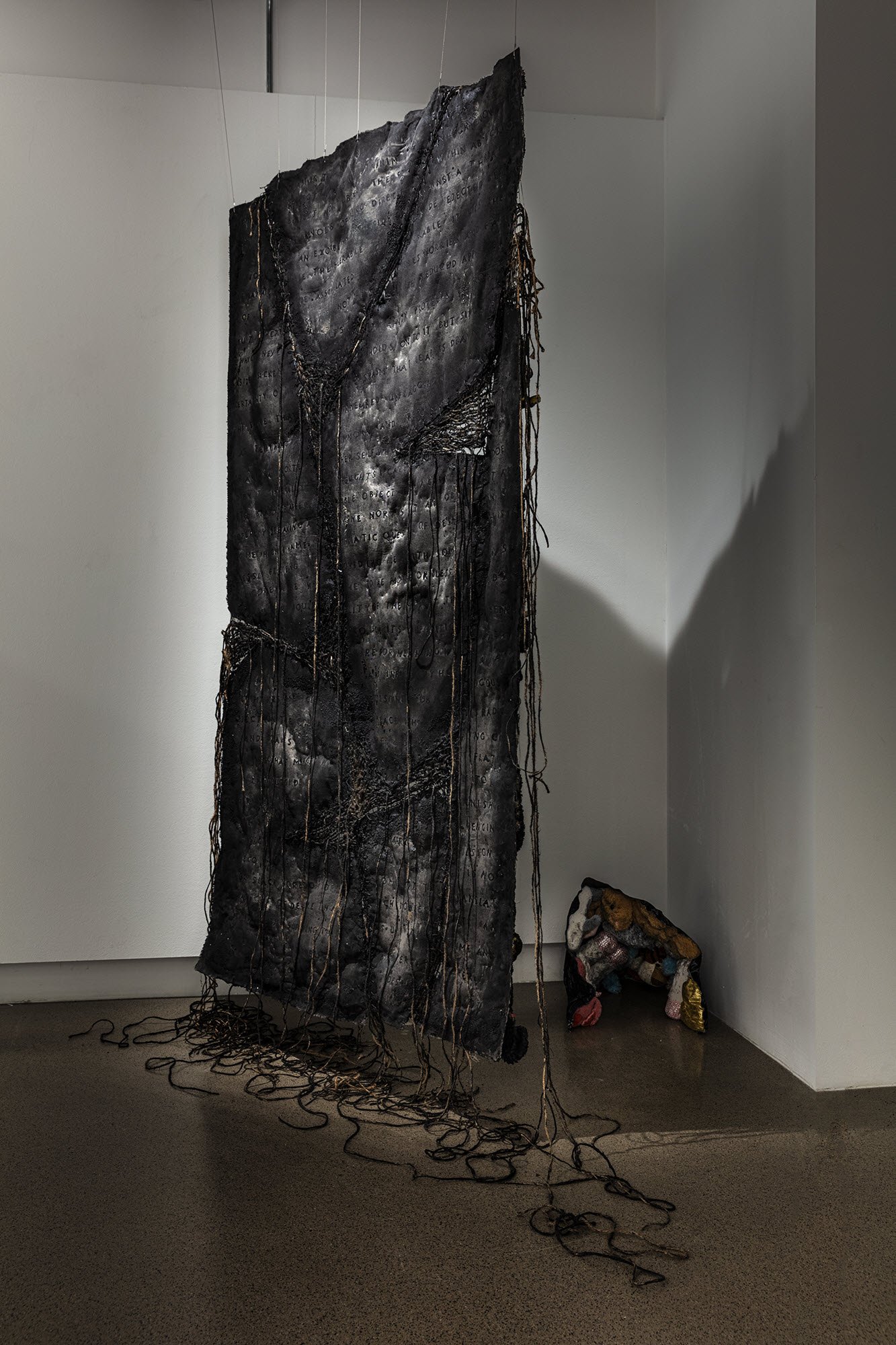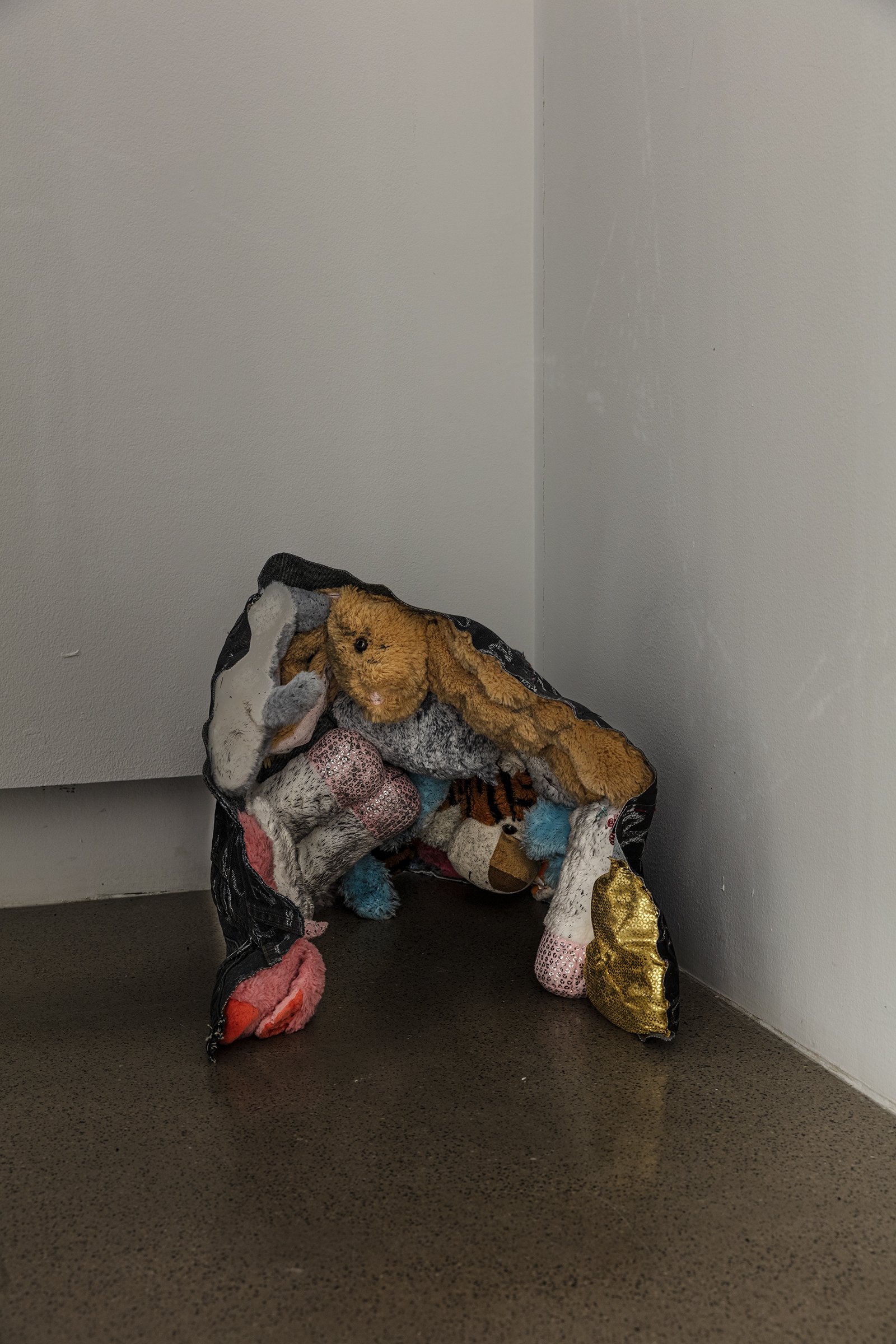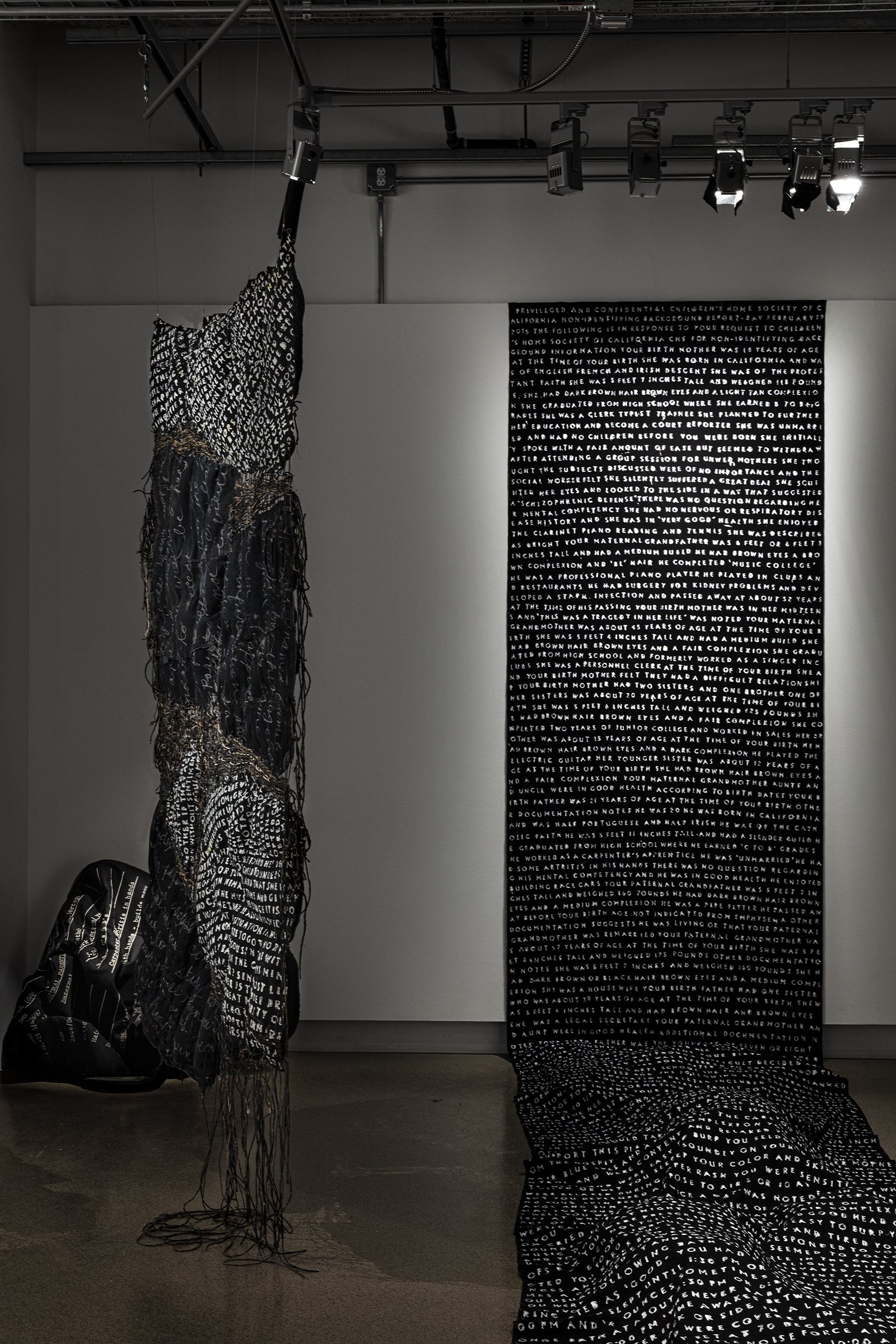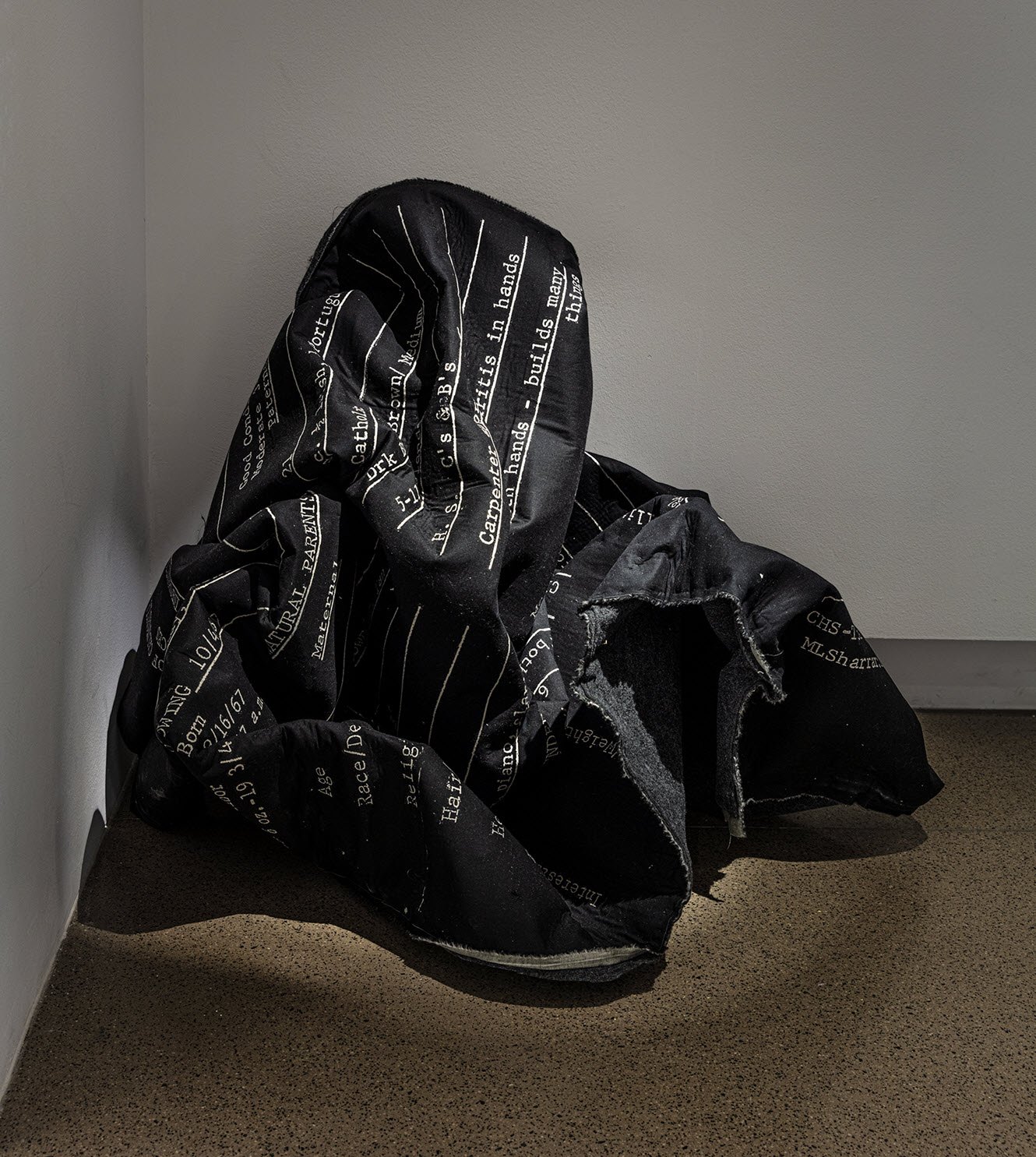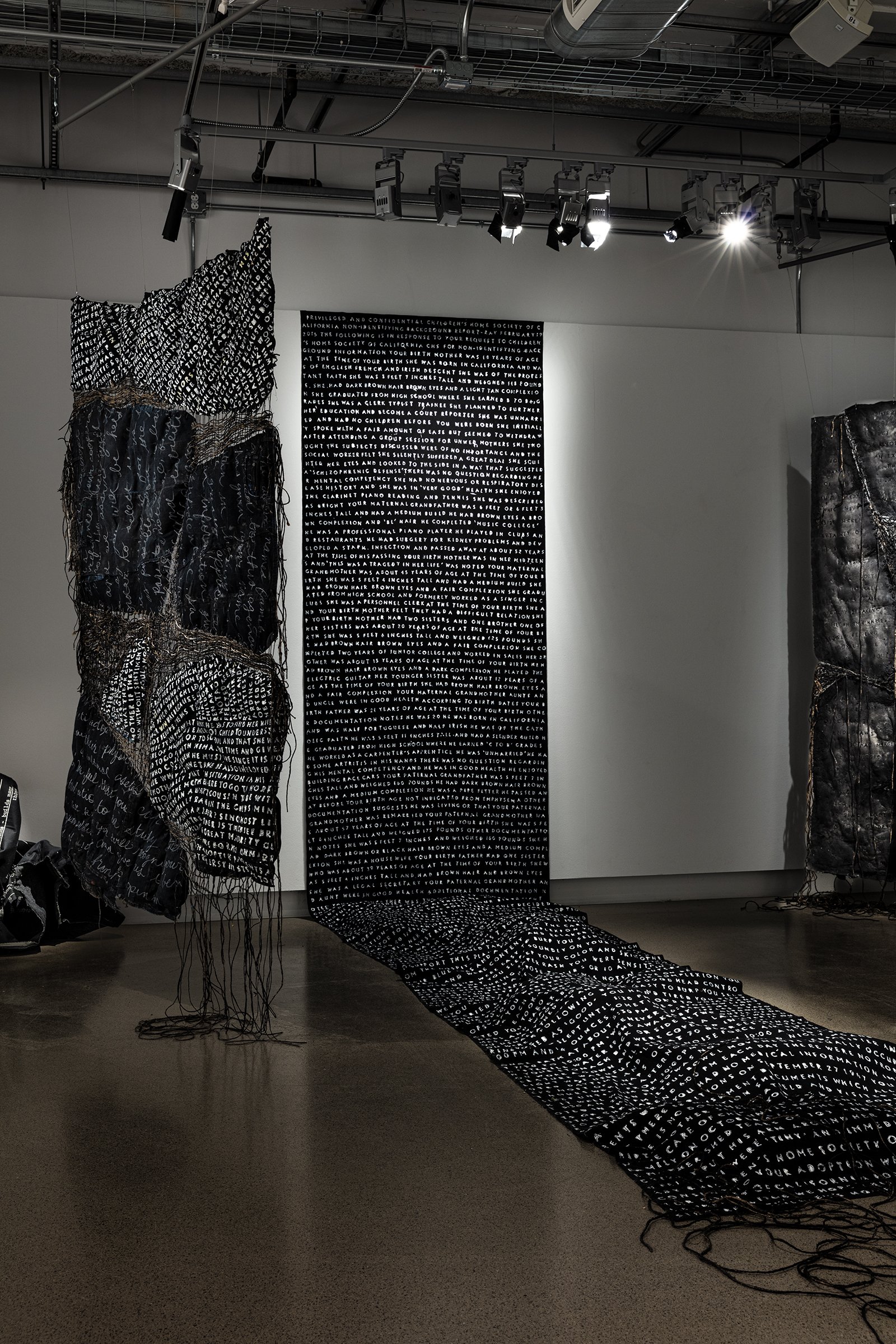CONJURING THE GHOST KINGDOM, OR THE INSUFFICIENT ARCHIVE
School of the Art Institute of Chicago • SAIC Galleries • July 2023
Photos by Travis Roozée
Joy Ray’s thesis exhibition, Conjuring the Ghost Kingdom, or The Insufficient Archive, investigates Ray’s own sealed-record adoption through an uncanny collection of inherited artifacts, drawing upon poetic and theoretical discourses to (dis)entangle and invoke conceptual and revelatory potentialities.
“Joy Ray strings up Frankenstein postulations that cross bodies with story quilts and chunks of Rosetta Stone. The resultant stitched together forms hang as if suspended in an infernal meat locker; their messages are golems of uncertainty at the scales of both self and tribe. ”
Non-Identifying Information, 2023, paint on fabric, hidden objects, 44 x 240 in.
Closed adoption seals the record in plain sight: the trace of the archive is visible but its contents are redacted. Birth certificates are falsified. Adoption agencies compile “non-identifying background information” that is often incorrect, incomplete, or otherwise problematic. What is excluded? What is revealed? Who decides, and why? What are the implications and potentialities of adoptee intimacies with missing, incomplete, or fabricated records, genealogies and origin stories?
Children’s Home Society of California. “Non-Identifying Background Report – Ray.” Personal communication. February 19, 2015.
The Script, 2023, paint, chalk, sand, baby garments, twine, and polyfill on salvaged denim, 72 x 50 x 6 in.
We do not talk about adoption except in the most careful and cautious ways. We follow dusty old scripts, hanging on to them like the flimsy railings of a rope bridge. We tread lightly around the topic, leaving most things unsaid. This is what a taboo feels like.
Rohr, Franz. “How Parents Tell Their Children They Are Adopted.” Child Welfare (1971): 298-300.
Children’s Home Society of California. “Request for Reference – Ray.” Personal archives.
Approaching Abjection, 2022-23, paint, twine, dirt, sand, polyfill, and salvaged stuffed animals on fabric, 80 x 45 x 6 in.
“Who was I? What was I? Whence did I come? What was my destination? These questions continually recurred, but I was unable to solve them.” —Mary Shelley, Frankenstein
Kristeva, Julia. "Approaching abjection." Oxford Literary Review 5, no. 1\2 (1982): 125-149.
Shelley, Mary. Frankenstein. Broadview Press, 2012.
In This Absence Blooms a Flower, 2023, paint, twine, sand, and polyfill on fabric, 80 x 33 x 4 in.
Your DNA is unlike that of anyone you know. You are a being apart, at the molecular level. Singular. A different species. You observe those around you, their strange activities and emotions. They organize themselves into tribes, take sides, feel allegiances. They claim something called heritage, trace inheritances: traits, talents, fatal flaws. But you! You cannot see your past; you cannot envision your future. Unknown, therefore infinite.
Harris, Anne. “An Adoptee Autoethnographic Femifesta.” International Review of Qualitative Research 10, no. 1 (2017): 24–28.
Holloway, Julian, and James Kneale. “Locating Haunting: a Ghost-Hunter’s Guide.” Cultural geographies 15, no. 3 (2008): 297–312.
Her Shape, His Hand, 2023, paint, fabric, twine and polyfill on salvaged denim, 53 x 50 x 4 in.
“I don’t want to haunt you, but I will.” —Eve Tuck and C. Ree, “A Glossary of Haunting”
Gordon, Avery F. Ghostly Matters: Haunting and the Sociological Imagination. Minneapolis: University of Minnesota Press, 2008.
Tuck, Eve, and C Ree. “A Glossary of Haunting.” In Handbook of Autoethnography, edited by Stacey Holman Jones, Tony E. Adams, and Carolyn Ellis, 639-658. Left Coast Press, 2013.
Invoice, 2023, paint, twine and polyfill on fabric, 48 x 44 x 6 in.
Is it wrong to view babies as commodities, transferable components of a vast adoption supply chain? Not according to the US Supreme Court, whose 2022 Dobbs decision notes that “in 2002 […] the domestic supply of infants relinquished at birth or within the first month of life and available to be adopted had become virtually nonexistent.” (Emphasis added.) In other words, the Court argues that one benefit of eliminating abortion will be the easing of adoption supply chain disruptions.
Supreme Court of the United States. Dobbs v Jackson Women’s Health Organization. 19-1392 (2022).
Children’s Home Society of California. “Adoptive Home Agreement.” Personal archives.
Spectres, 2023, paint and fabric on armature, dimensions variable, each approximately 24 x 24 x 36 in.
Memories, facts and myths careen in chaotic, infinite orbit around the blackest of holes. A living, breathing gap. You can sense its shape, its heft. And yet it eludes. This absence is sentient. It toys with you. I have secrets too. Things I’m not saying. Things I may never say, certainly not here. Not to you. Secrets are how we protect what we love the most.
Children’s Home Society of California. “Non-Identifying Background Report – Ray.” Personal communication. February 19, 2015.
